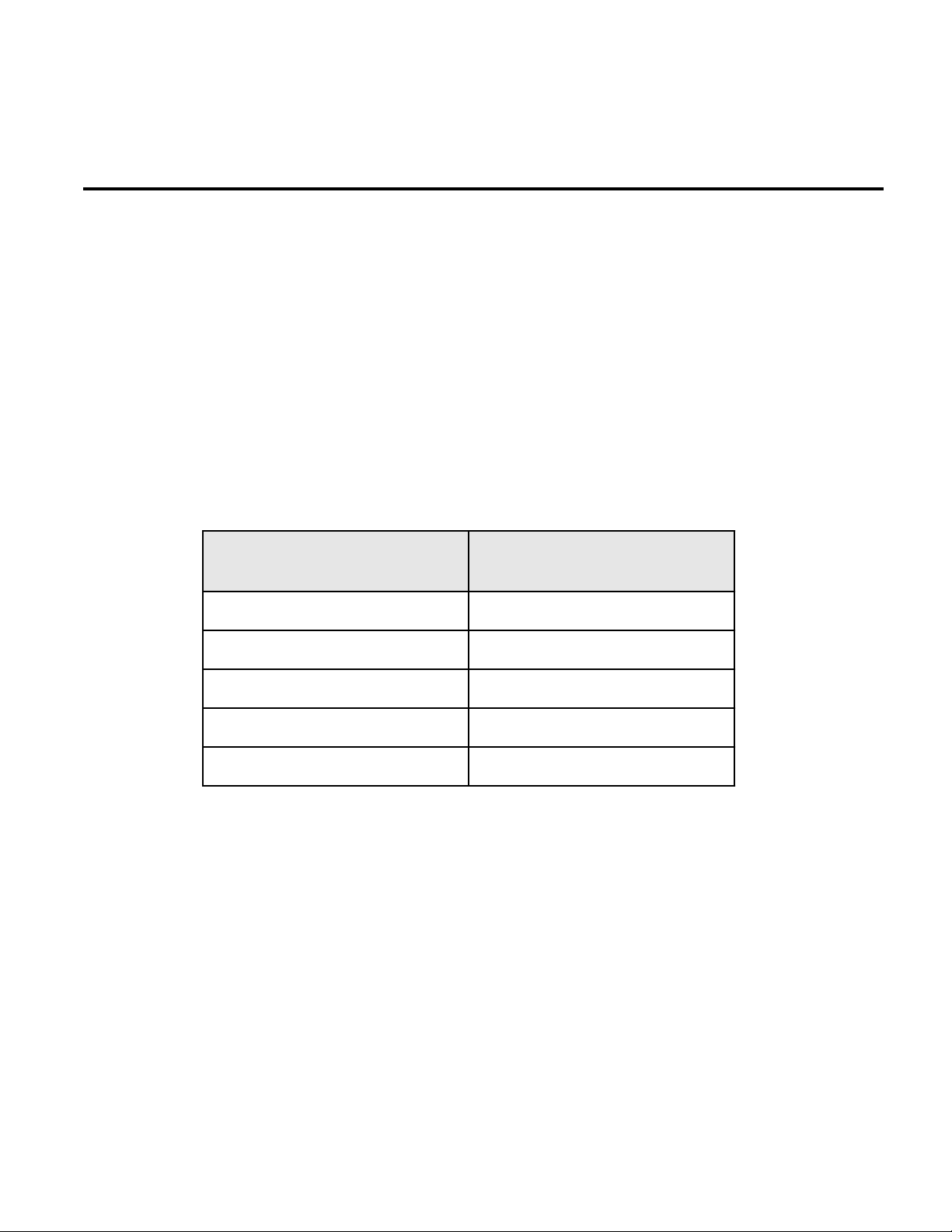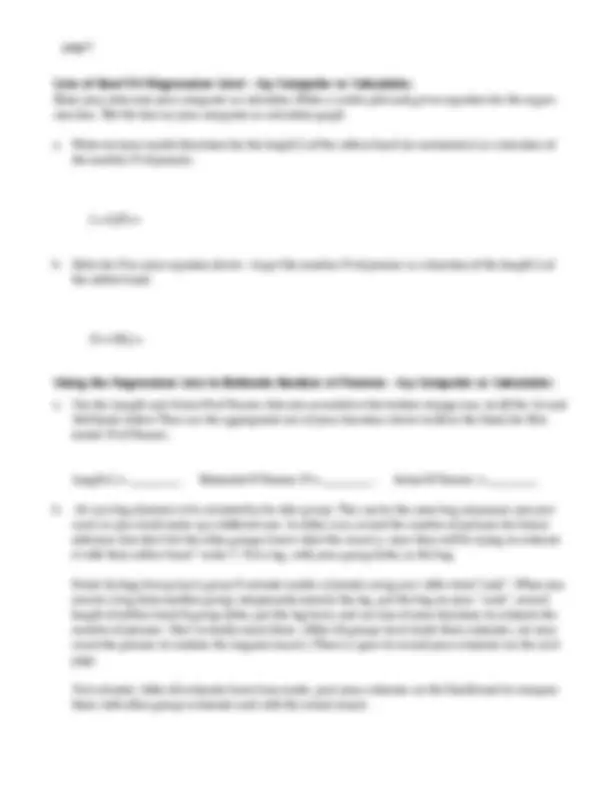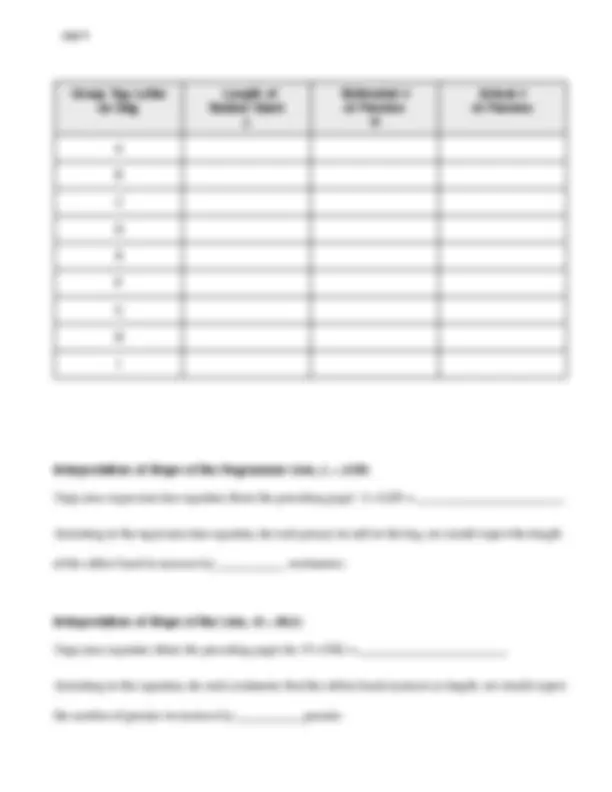




Study with the several resources on Docsity

Earn points by helping other students or get them with a premium plan


Prepare for your exams
Study with the several resources on Docsity

Earn points to download
Earn points by helping other students or get them with a premium plan
Community
Ask the community for help and clear up your study doubts
Discover the best universities in your country according to Docsity users
Free resources
Download our free guides on studying techniques, anxiety management strategies, and thesis advice from Docsity tutors
An experiment to investigate the relationship between the length of a rubber band and the number of pennies it supports. Students are instructed to collect data by hanging bags of pennies from a rubber band and recording the length of the rubber band. They then use the data to create a scatter plot and determine the line of best fit, which can be used to estimate the number of pennies based on the length of the rubber band. The document also includes instructions for using the regression line to make estimates and for interpreting the slope of the line.
Typology: Papers
1 / 4

This page cannot be seen from the preview
Don't miss anything!



Suppose we hang a bag of pennies from a rubber band. If we increase the number of pennies, we would expect the length of the rubber band to increase. Is there a (linear) relationship between the length of a rubber band and the number of pennies in a bag? If so, can we use that relationship to calibrate the rubber band and use it as a device to count pennies or weigh objects?
Working in a small group of about 4 people, collect data by hanging a bag of pennies from a rubber band and recording the length (in centimeters) of the rubber band versus the number of pennies hanging from it. Start with 20 pennies and add 20 pennies at a time, up to about 100 pennies.
Plot your points on the graph paper on the next page, with number of pennies, N , on the horizontal axis and length of rubber band, L , on the vertical axis. Sketch a line of best fit.
Put an unknown number of pennies in the bag, then measure and record the length of the rubber band. Use the line you drew on the next page to determine (and record) the corresponding number of pennies. How many pennies are predicted? Now count the pennies. How close was the predicted number to the actual number? Length = ____________ , Predicted # pennies = ____________ , Actual # pennies = ____________ .
Make a scatter plot on this paper for Rubber Band Length, L, versus Number of Pennies, N. Indicate the scale on the vertical axis (you don’t have to start at 0). Does it look like a linear model would be reason- able?
Copy your regression line equation (from the preceding page): L = L ( N ) = ___________________________ According to the regression line equation, for each penny we add to the bag, we would expect the length of the rubber band to increase by ____________ centimeters.
Copy your equation (from the preceding page) for N = N ( L ) = ___________________________ According to this equation, for each centimeter that the rubber band increases in length, we would expect the number of pennies to increase by ____________ pennies.